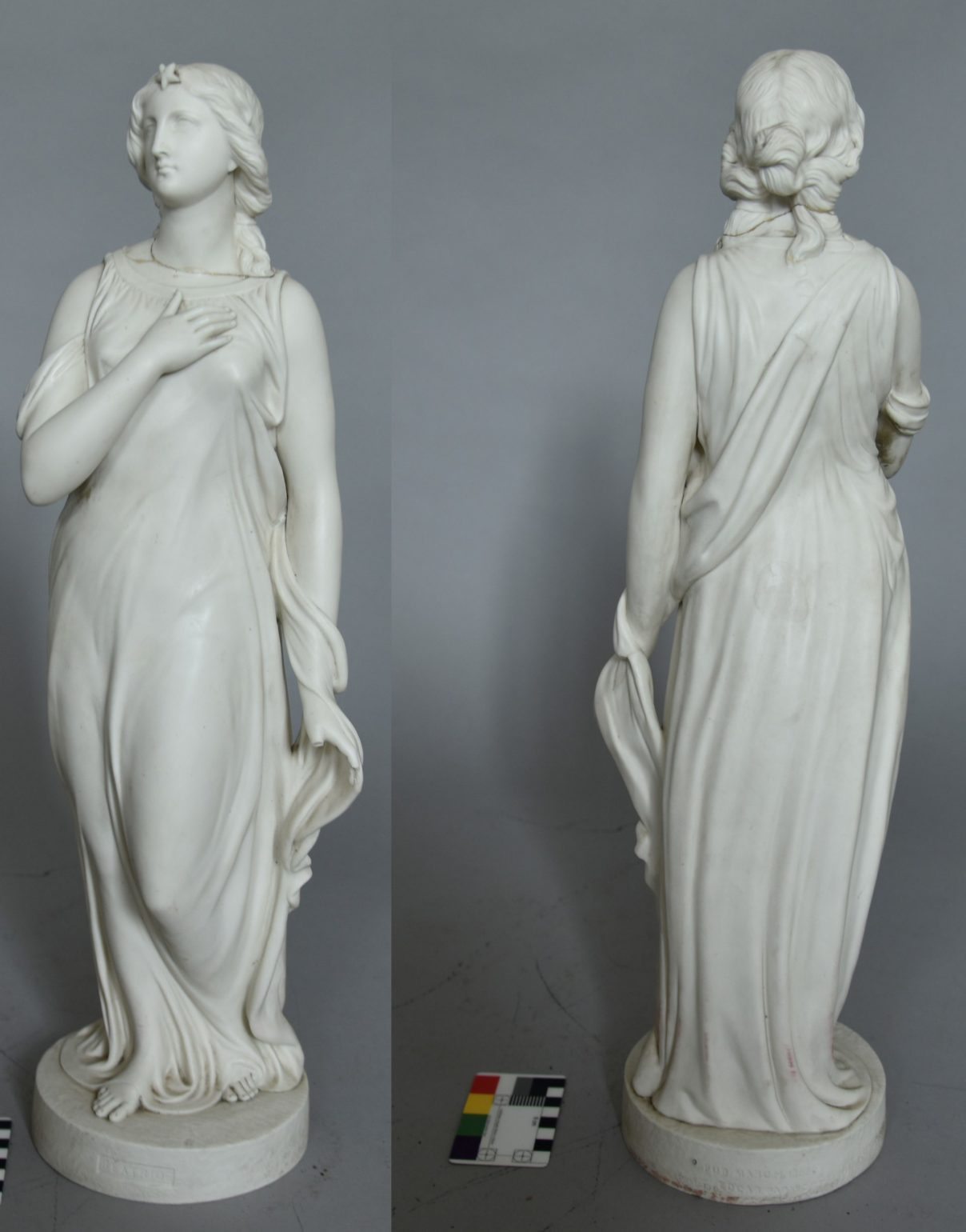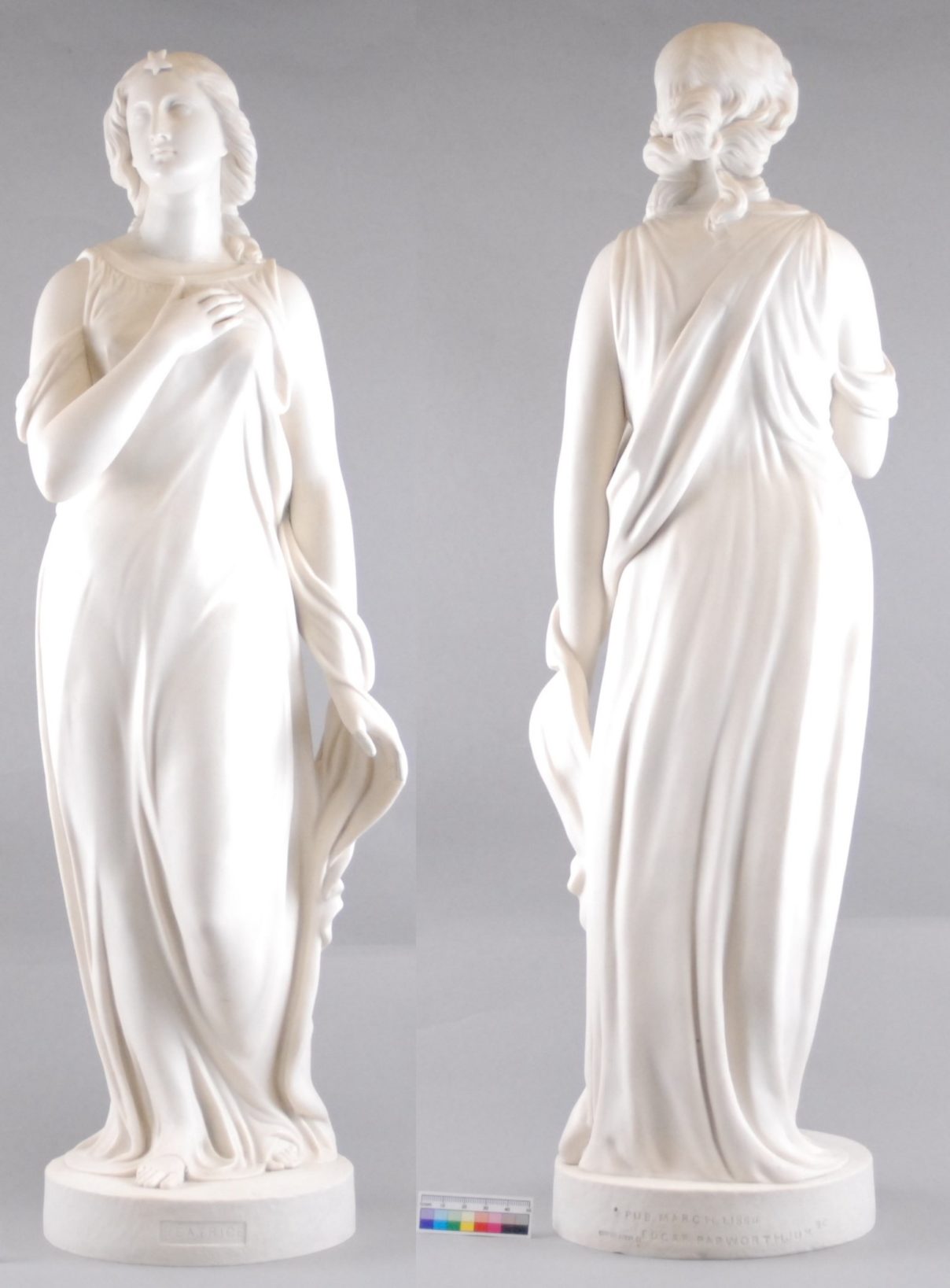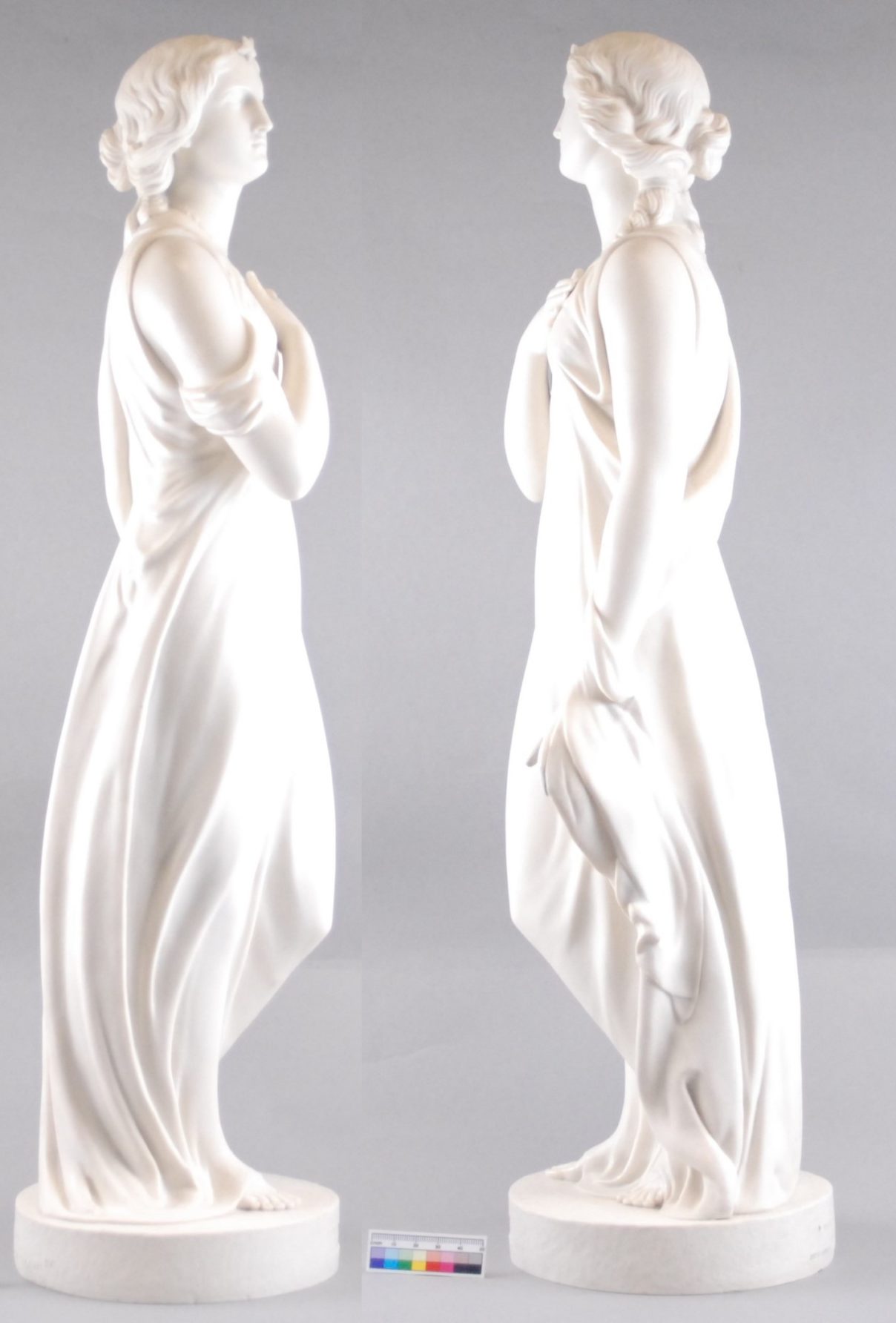Beatrice Statuette
Object

“Beatrice” was first designed by Edgar George Papworth Junior in 1860 as a companion piece to his other work, “Maidenhood” and was originally made of clay. This statuette was manufactured by Copeland and Co., exhibited through a stamp on the reverse of the statue.
The statuette of “Beatrice” was produced in 1880, demonstrated by the number “80” stamped on the reverse of the statue. Based on comparative pieces and relevant analysis, it was determined that the statuette is made of Parian ware, a porcelain with a large amount of felspar inclusions, that was common in the late nineteenth century. Copeland and Garret, the manufacturer of this statuette, was one of the first companies to produce Parian ware.

The growing middle-class interest in the fine arts in the early nineteenth century was, in part, due to the development of the pantograph by James Watt in 1825. This invention allowed for the replication of existing sculptures in wax or alabaster. This practice was refined by Benjamin Cheverton in 1836, who engineered the pantograph to allow for statues to not only be copied, but also rescaled to any size. These replicas could then be used to create casts of the originals in plaster of Paris, allowing for copies to be mass-produced in a wide variety of materials including bronze and plaster.
Condition
- Evidence of dirt on the surface, especially in crevices
- Signs of biological staining on the surface
- Two digits are missing from the proper left hand
- There is evidence of a previous repair at the neck of the statue which has deteriorated and discoloured over time.
Conservation

The surface was initially cleaned using an appropriate solution applied using a combination of cotton swabs and latex free sponges. This allowed for all crevices to be reached. The more ingrained soiling proved difficult to remove using this method. As such, a 2% solution of laponite was created and applied to the areas of intense soiling. The poultice was left to dry for approximately four hours before being removed. The statuette was rinsed using a suitable solution following treatment in order to remove any laponite residue.
Through FTIR analysis, it was determined that the adhesive used previously to restore “Beatrice” was an epoxy resin. A poultice of cotton wool was applied to the join area and soaked in a suitable chemical to try and soften the adhesive, however this was unsuccessful. A second poultice using an alternative chemical was applied to the area and after 24 hours of contact, the head was removed.

The excess adhesive was removed using a scalpel, and the surfaces of the fracture were cleaned using an appropriate solution to remove any remaining adhesive or chemical residue. The head was then re-adhered using a suitable ceramic adhesive.
Whilst re-adhering the head of the statuette, a small area of missing surface material was noticed on the reverse. It was deemed necessary to fill this area, and Flügger was applied directly to the area of loss. Once cured, the fill was colour matched to the matte Parian ware using acrylic paints.
Finally, new fingers were moulded and cast in order to replace the losses on the left hand. A mould was taken of the thumb and index finger of the right hand of the statuette using Siligum putty. Once the moulds had set, they were filled with Miliput epoxy putty. In order to accurately match the break point of the fingers, the hand of the statuette was wrapped in cling film before the Miliput moulds were pressed against the areas of loss. The cling film protected the statuette from adhering to the Miliput, whilst still ensuring that the pieces would fit together. Once cured, the casts were adhered to the proper left hand using a suitable adhesive and were sanded smooth. The fingers were then colour-matched to the Parian body of the statuette using acrylic paints to ensure the eye was not drawn to this area.
